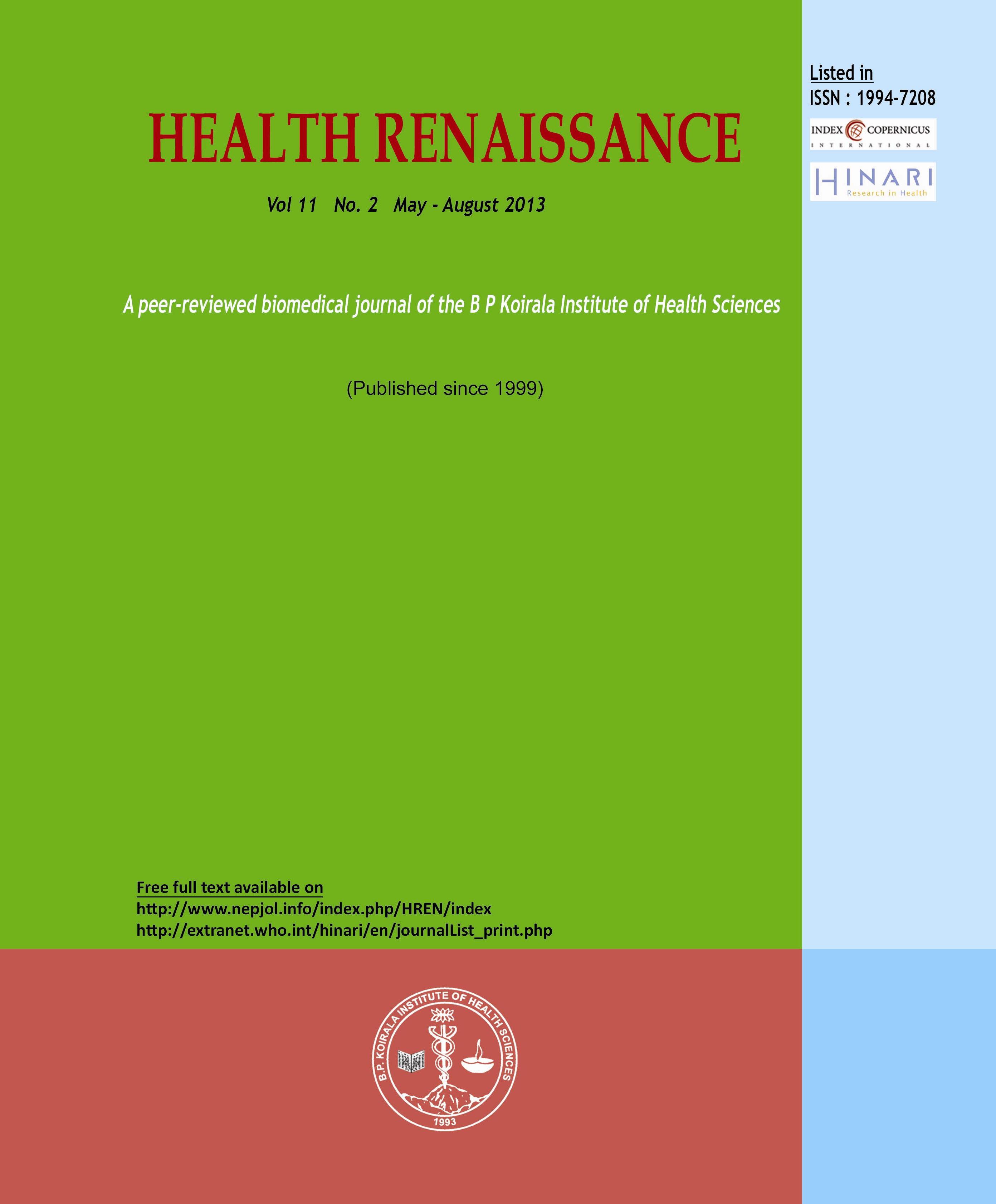Study of antimicrobial susceptibility pattern of Gram positive organisms causing UTI in a tertiary care hospital in eastern region of Nepal
DOI:
https://doi.org/10.3126/hren.v11i2.8218Keywords:
BPKIHS, Urinary tract infection, Multidrug-resistanceAbstract
Background: Urinary tract infections (UTIs) are the most important cause of mortality and morbidity affecting all age groups with an estimated 150 million cases occurring globally per year. Resistance to antibiotics is highly prevalent in bacterial isolates causing UTI.
Objectives: To observe the isolation of gram positive bacteria causing UTIs and determine their resistance pattern to antibiotics.
Methods: A retrospective study was conducted in BPKIHS from August 2009- August 2010. A total of 11022 urine samples from patients who visited BPKIHS were analyzed. All specimens were inoculated on routine culture media. Bacterial isolates were identified by conventional bacteriological methods. Susceptibility testing was performed by standard methods as recommended by clinical laboratory standard institute.
Results: A total of 459 gram positive uropathogens were isolated. Altogether 5 different gram positive bacteria were isolated among which Staphylococcus aureus (47%) was the most predominant organism followed by Enterococcus species (34%), Enterococcus faecalis (18%), and Coagulase-negative Staphylococci (1%). UTI caused by gram positive uropathogens was seen in 68.8% females as compared to 31.2% males. Multidrug resistance (MDR) isolates accounted for 308 out of 459 isolates (67.10%). Multidrug resistance was commonest with Enterococcus spp (71.5%) followed by Streptococcus spp (66.6%). Drugs, which retained usefulness for Gram-positive isolates were vancomycin, nitrofurantoin, ciprofloxacin and norfloxacin.
Conclusion: The study revealed that bacterial resistance in gram positive uropathogens in tertiary hospital in eastern region continues to be a great problem. So, regular monitoring of emergence of resistance is highly recommended and specific antibiotics should be given only after the laboratory results are available.
Health Renaissance, January-April 2013; Vol. 11 No.1; 119-124




